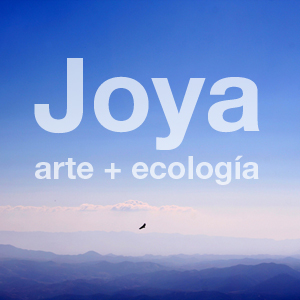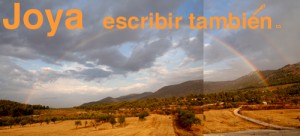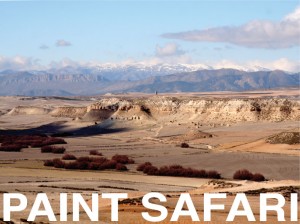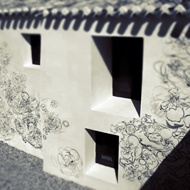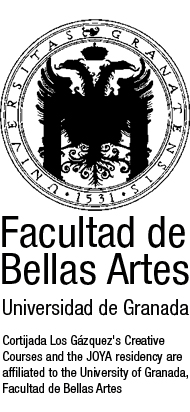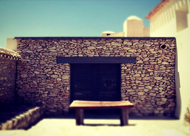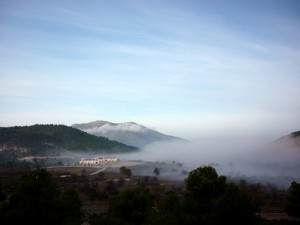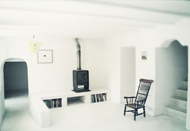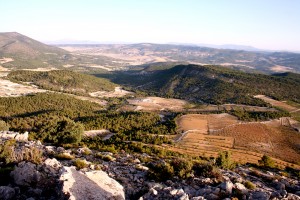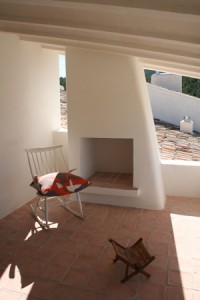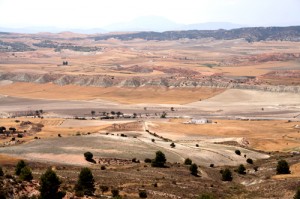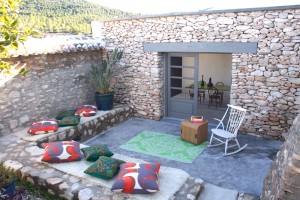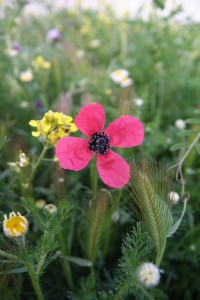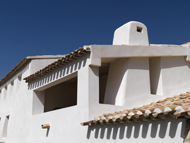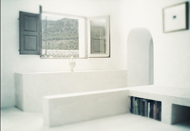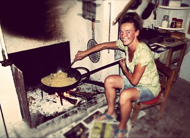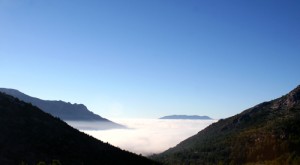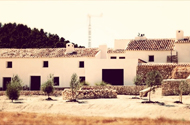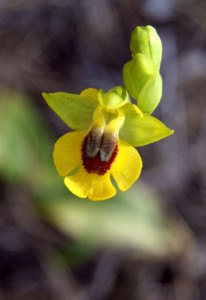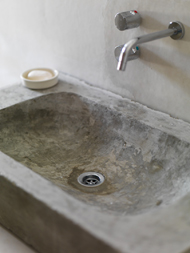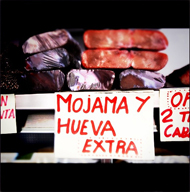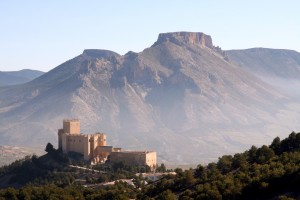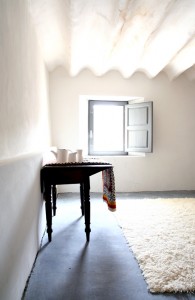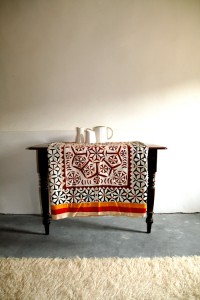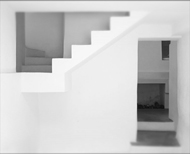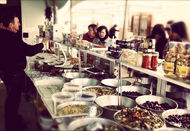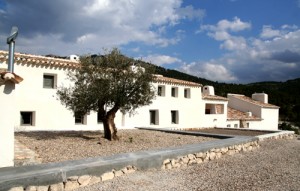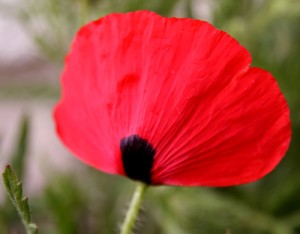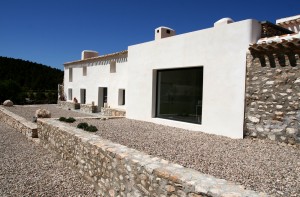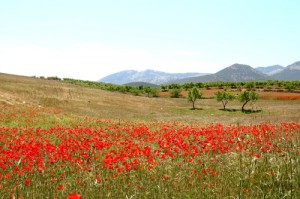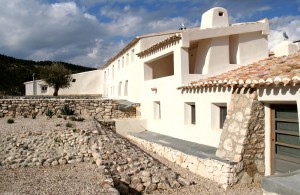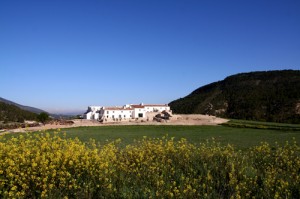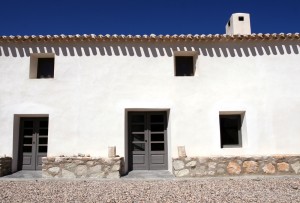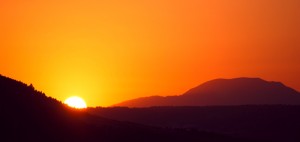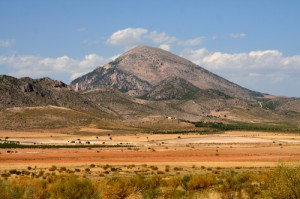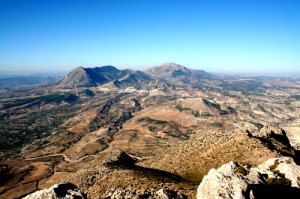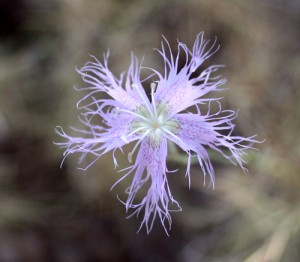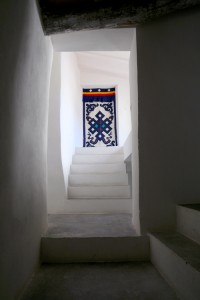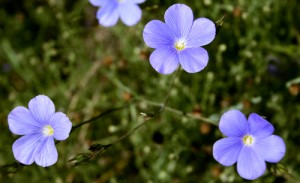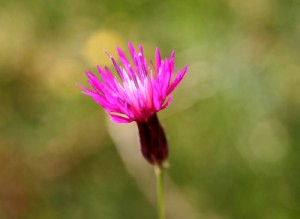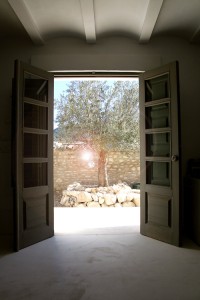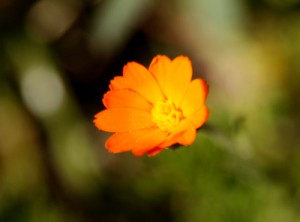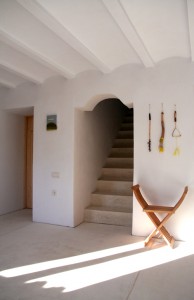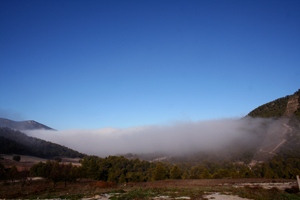Archive for Artistas que admiramos
Cave Painting
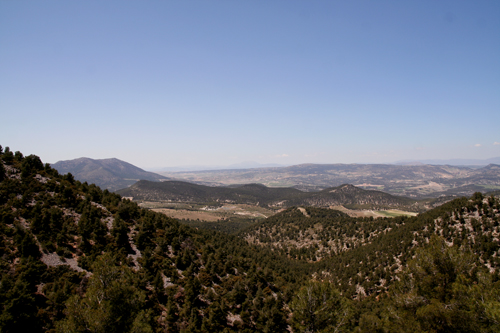
Yesterday found my brother and niece, Maxine and I exercising a tip given to us by a local shepherd. We made a short expedition to find some pre-historic cave paintings. Leaving mid morning the going was quite tough, climbing as we were up a steep barranco, the heat from the sun trapped in the narrow gorge. The scramble, as it was, gave some immediate rewards with orchids such as this Dactyorhiza elata (please feel free to correct me if my identification is wrong!)…
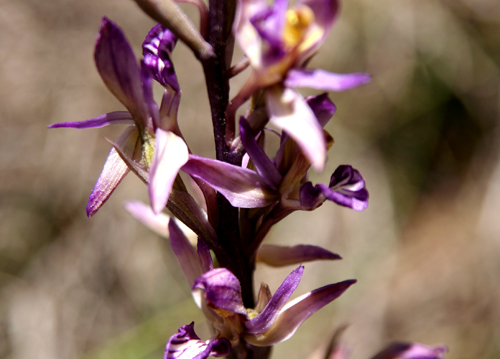
The climb was over limestone screeds populated with pine trees and Kermode and Spanish oaks…
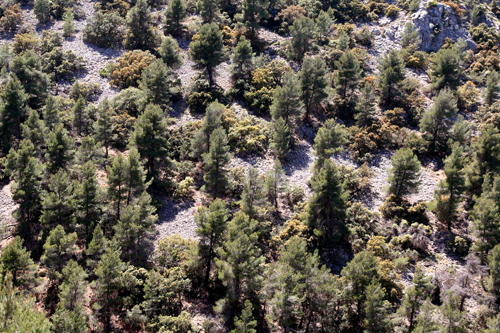
Maintaining a foot hold was a tricky business but as we ascended the barranco nearing the top we could see our goal…
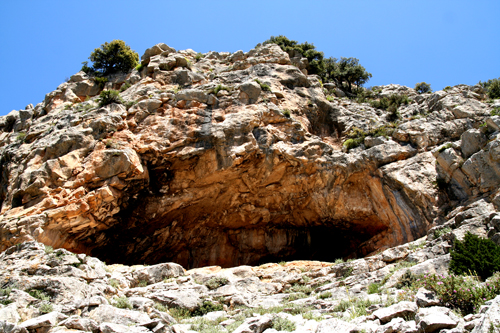
Flora changes at this altitude and it’s great to see one of my favourites growing in the wild. Verbascaum bombisiferum…
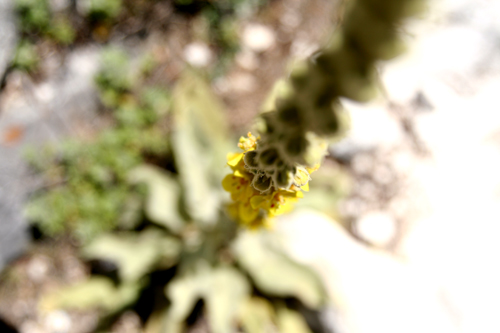
At last reaching the cave we found some relief from the heat and sat in the cool cave mouth admiring the view. Maxine seemed to have found some primordial dog instinct that allowed her to sit regally in the cave watching her territory…
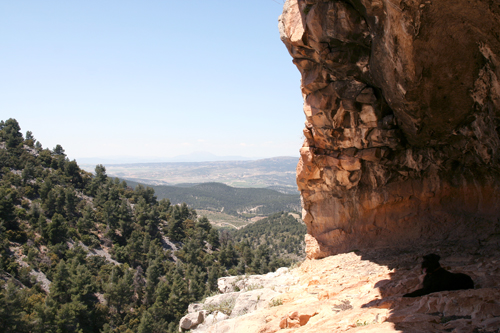
But where were the cave paintings? We searched hard, high and low, looking for indistinct marks in the limestone rock face and at last, there it was…
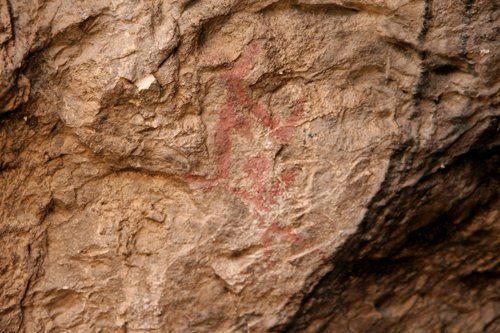
At first we thought it was a fish but then we decided that it must be two figures in some acrobatic activity. If this drawing is contemporary with the drawings in the more famous Cueva de los Letreros and Ambrosia, in this region, then it is over 4000 BC or 6010 years old. This is a drawing from Palaeolithic or Neolithic Andalucian ages. This is from a time before what we consider the age of modern humans, who came from southern France and the eastern Mediterranean.
This artist stood here all those years ago watching natural phenomena such as the East Atlantic Flyway (the north south migration of birds from Africa to Northern Europe), he (or she) considered himself as part of this environment, it’s cycle of life and death.
I like the idea that this artist also decorated his/her own body with the same materials he used to paint the walls of this cave. Archeology in Murcia has located sea shells used for pigment extraction and black manganese. What a creature it must have been and what a great discovery for us.
Joya. Artists Residence / no.19 / Angie Lewin / 06.2011
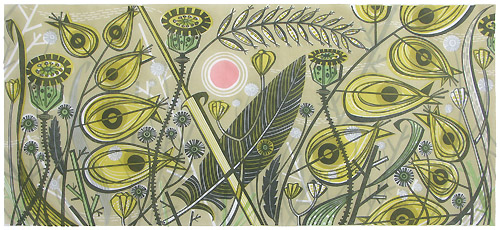
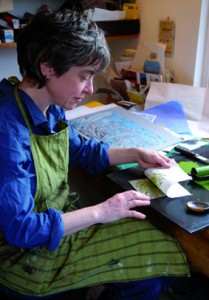 Angie Lewin studied printmaking at Central St Martin’s College and Camberwell School of Arts and Crafts. After working in London as an illustrator she studied horticulture and a move to Norfolk prompted a return to printmaking. Inspired by both the clifftops and saltmarshes of the North Norfolk coast and the Scottish Highlands, she depicts these contrasting environments and their native flora in wood engraving, linocut, silkscreen, lithograph and collage. These landscapes are often glimpsed through intricately detailed
Angie Lewin studied printmaking at Central St Martin’s College and Camberwell School of Arts and Crafts. After working in London as an illustrator she studied horticulture and a move to Norfolk prompted a return to printmaking. Inspired by both the clifftops and saltmarshes of the North Norfolk coast and the Scottish Highlands, she depicts these contrasting environments and their native flora in wood engraving, linocut, silkscreen, lithograph and collage. These landscapes are often glimpsed through intricately detailed
plantforms.
Attracted to the relationships between plant communities on an intimate level, even the fine lines of insect eggs on a flower bud are observed in her work. Still lives often incorporate seedpods, grasses, flints and dried seaweed collected on walking and sketching trips. A Wedgwood cup designed by Ravilious, may contain feathers and seedheads.
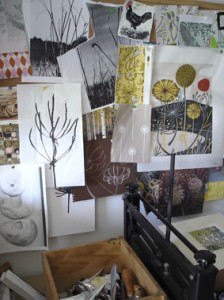 A recent anthology of garden writing published by Merrell, ‘Garden Wisdom’, is illustrated throughout by Angie’s prints, and author Leslie Geddes-Brown explains:
A recent anthology of garden writing published by Merrell, ‘Garden Wisdom’, is illustrated throughout by Angie’s prints, and author Leslie Geddes-Brown explains:
“The whole book was, in its turn, inspired by the art of Angie Lewin, who brings her own vision of the natural world to her work. She sees the beauty in all seasons and all manifestations of plants: the ordered pattern of the blooms, the thrusting energy of the emerging buds, the prolific seedheads and the varieties of shapes, colours and habits to be found in meadow and border.”
As well as designing fabrics and stationery for St Jude’s, which she runs with husband Simon, she has completed commissions for Penguin, Conran Octopus and Picador. She has also designed fabrics for Liberty’s Autumn Winter 2010 collection. Angie is a member of the Royal Society of Painter-Printmakers and the Society of Wood Engravers.
Jesus and Raphael came by Today…
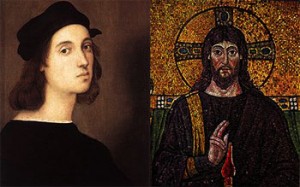 Jesus and Raphael came by Los Gazquez today and what a remarkable similarity they bore to the originals, i.e. Father, Son and Holy Ghost (Jesus) and the other trinity Michelangelo, Leonardo and Rapha!
Jesus and Raphael came by Los Gazquez today and what a remarkable similarity they bore to the originals, i.e. Father, Son and Holy Ghost (Jesus) and the other trinity Michelangelo, Leonardo and Rapha!
Except these two are guides to the natural history and culture of the region of Almeria. Jesus in particular wants to work with us at Los Gazquez which we are looking forward to very much.
I’ll keep you informed.
In the mean time there are plans afoot to go with the children and Jesus to see the flamingos at the salinas in the Cabo de Gata.
Saturday Night Fever…
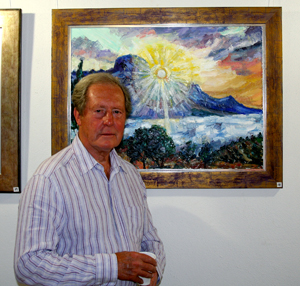 … and a very nice evening it was too. We went to the exhibition of a friend of ours, John Riches. John and his wife Marilyn are building a house here with a studio. He really loves the landscape of ‘Los Velez’ and spends an admirable amount of time ‘brush in hand’ painting it.
… and a very nice evening it was too. We went to the exhibition of a friend of ours, John Riches. John and his wife Marilyn are building a house here with a studio. He really loves the landscape of ‘Los Velez’ and spends an admirable amount of time ‘brush in hand’ painting it.
So when John isn’t racing solar powered cars across the Australian outback or dreaming up schemes for a solar powered boat, he can be found in the ‘Comarca de Los Velez‘ exhibiting at Pepe’s gallery.
Galeria ‘La Concepcion’, Velez Blanco from the 5th of July until the 26th (my birthday incidentally), 19.00 to 21.00 in the evenings when it is a little cooler.
Cortijada Los Gazquez / A Call To All Artists

We would like to announce our visiting artists programme here at Cortijada Los Gazquez.
We are looking for artists, working in any medium, who have an interest in the environment, to be resident at our ‘retreat’. The period of time can be negotiated, somewhere between one and two weeks. Bed and board are included as is sole use of the studio (illustrated above).
In return we will expect their activities here to enhance the creative and cultural spirit of the place. They will be expected, via the activity of their practice, to have a beneficial and ‘mentoring’ effect on our ‘creative’ clients. They will not be required to teach unless they have a will to and our clients request assistance. They will be required to converse with clients on the inbetween times in order to express and explain the creative worlds they inhabit, the processes they experience through their work and how one curates and presents work to the public.
The visiting artist and their work will be featured on the Cortijada Los Gazquez website under a ‘Visiting Artists Programme’ page.
If you are a practicing artist and are interested please be in touch with us through our ‘contact’ page, join our e-list, on the website…
Dulce del Membrillo
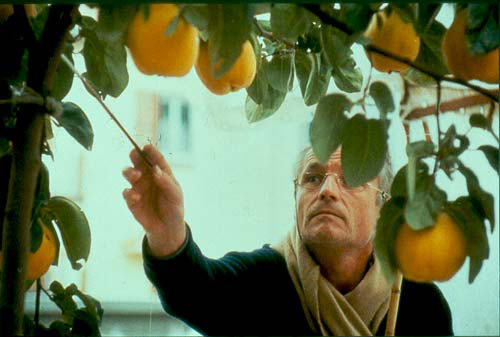
This is a photograph of Spanish artist Antonio Lopez Garcia, a man obsessed with quinces. He is criticised by many artists for his neo-academism but admired by Robert Hughes (Shock of the New) apparently. I’m sure his neo-academism would have gone down well at my old art school (The Royal Academy Schools).
Spanish director Victor Erice made a film about the artist in 1992 called El Sol del Membrillo (Sun of the Quince Tree). The film records his attempt to capture the perfect fleeting moment of the beauty of quinces on canvas.
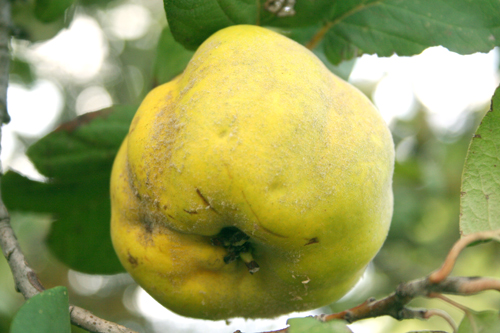
Now I doubt our quinces at Los Gazquez would qualify as sufficiently beautiful for Sr. Don Antonio, but what I would like to achieve with them is to capture the perfect fleeting moment of the beauty of the quince in a jar of quince jelly (Dulce del Membrillo). I shall search for the secret recipe.
Coming to visit? Consider this…
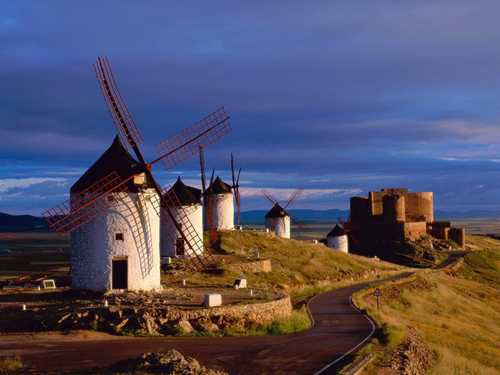
To fly to Los Gazquez our nearest airports are Almeria, Granada, Murcia (though actually nearer La Manga, God forbid) and Alicante. Granada and Almeria are preferable in my opinion as the landscape you cross from these airports to here is spectacular. Especially Granada as you drive east behind the Sierra Nevada, Guadix and Baza.
But consider this…
My carbon footprint calculator tells me that a return flight from London (purely an example) to Granada issues 0.459 tonnes of carbon into the atmosphere per person. If you wish to escape to the sun then our continued use of aircraft to travel the globe will more than guarantee a hot climate. It will guarantee a dry and barren one too.
Much better would be the train. Again London to Granada (a mere 1476 miles/2375km) and produces 0.286 tonnes of carbon. ‘Not significantly lower’ you say ‘and a much longer journey’.
Yes indeed but consider this…
After a pleasant lunch in London take the Eurostar to Paris arriving early evening. Then take the Trenhotel overnight to Madrid.Then having had a drink at the bar, supper in the diner, have a deep and restful night in your sleeper. Having arrived, in the morning take breakfast in the Puerto del Sol and visit the Prado, lunch somewhere special and by early evening you are ready to take the train to Granada. Around 11.30 in the cool of the evening (the Spanish will just be coming out to play) check into your hotel and immediately go out and drink in the night’s atmosphere. In the morning visit the Alhambra before everyone else, enjoy the Generalife until lunch and then make your way onto us at Los Gazquez, about an hour and a half away.
What’s that, a day and a half? You are rested, your head full of fine art and your stomach full of fine food and your adventure is just about to begin. What’s more your trip is more sustainable for the environment and when you are with us you will produce no carbon emissions at all!
El Coloso de Francisco Goya
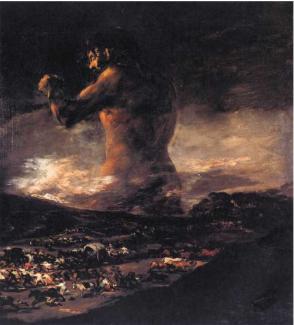
I feel I have known this painting all my life, it has always been exciting, something like the ’secret’ miracle source of light at the heart of a Joseph Wright of Derby or an apocalyptic landscape by John Martin.
It’s a mad masterpiece, an allegory to the frailties of man and the physical injustices wrought upon each other when greed becomes our sole motivation. Baudelaire described it as “giving the monstrosity the ring of truth”, I’m not sure which monstrosity he was referring to, the giant or the Napoleonic war, but either way Goya’s masterpiece is a central piece of work at the heart of the artist’s dark presentiment of war and social chaos unleashed upon Spaniards by Napoleon’s invading army.
Except, now we are told it’s not by Goya but maybe one of his students. Well, so what I say. For me it will always be Goya’s, even if he didn’t paint it. You see Goya’s shadow is so large in Spain and beyond, that whoever made this painting could not have been unaware of Goya and have been profoundly influenced by him. This is not to say that I think a copy of someone’s style is acceptable. It is to say that his unique, mad visions cut a cultural and aesthetic tidal wave through Spain, and that anyone caught in the under tow of that wave was more likely ‘possessed’ by the spirit of Goya rather than merely trying to emulate him.
I suspect provenance has more to do with market forces than art history especially when this week is the week that saw another Monet ‘Waterlillies’ painting going for a record 40 million.
And I do get quite concerned by some of the opinion expressed my the media critics. For example the BBC World service had one commentator, (who’s name I can’t remember so let’s call him Brian Sewell because I disagree profoundly with everything he said) who remarked that it was quite extraordinary that a painting created by a man who could hardly see for cataracts could achieve such a high price at market!
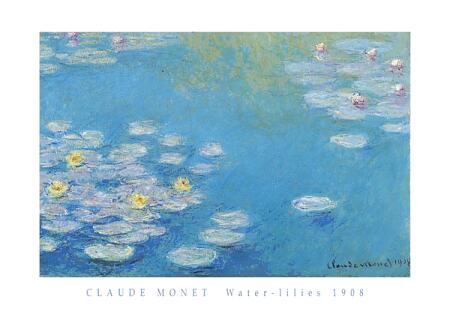
So, let’s follow his argument through. In his supine opinion Monet’s painting is deficit because he had bad eye sight, Beethoven couldn’t write music because he was deaf, Evelyn Glenny can’t play music because she cannot hear what she plays. Willem de Kooning’s later works were suspect because the artist had alzheimers.
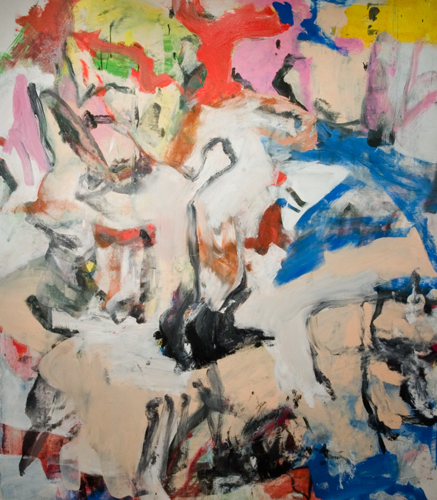
It’s very sad that someone should be ‘out there’ expressing such banal and facile opinion. Does he really believe an artist’s perception of the world is solely conceived through the apposite sensory organ?
Goya in his latter years was mad too. They must be worthless.
Mickey Mouse y Mojacar, quien sabe?
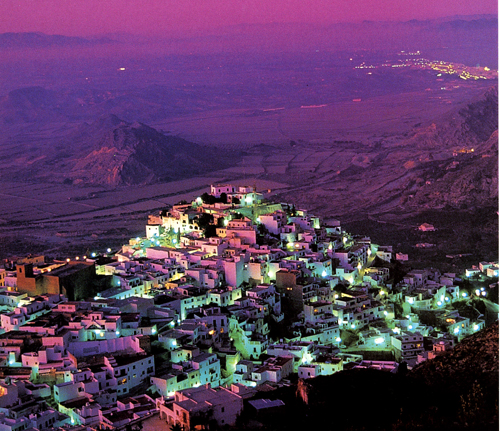
From the 13th to the 15th century Mojacar Pueblo stood on the Granada Emirates eastern frontier and suffered many Christian attacks including a massacre in 1435 before succumbing to the ‘Reconquistas’ in 1488. From then on it was in one of Almeria’s most backward and decayed areas until it’s resurgence as an artist’s community in the 1960’s.
The Pueblo is still very characterful but it’s surrounding has succumbed again, this time to tourism.
However, it is alleged, that Mojacar has a famous son. Can you guess who? Yes indeed Uncle Walt. Now, there is one of those mysteries surrounding the story. It is claimed that his real name was Jose Guirao and that his mother was a great local beauty called Isabel Zamora Asensio. Walt or Jose was supposedly born in the barrio of Espiritu Santo sometime in 1900. The father died young and the mother moved to Villaricos where she met a sea captain who took the boy to Boston and fostered him to a farming family from Kansas.
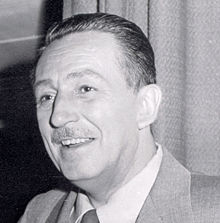
Apparently even his good friend Salvador Dali said Walt was convinced he was Spanish. Now there is a reliable witness if ever there was one.


